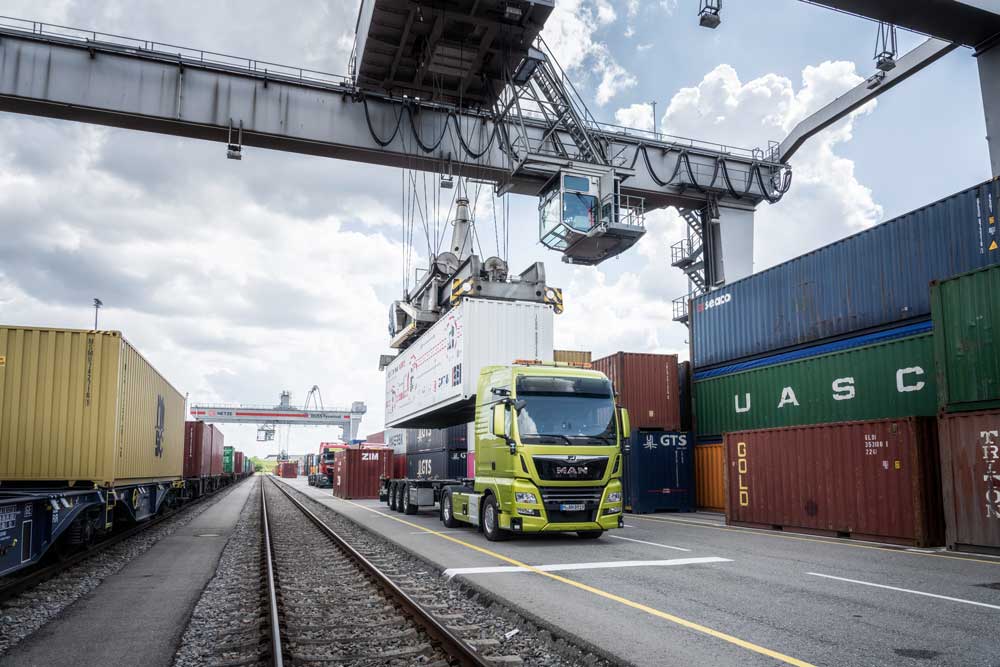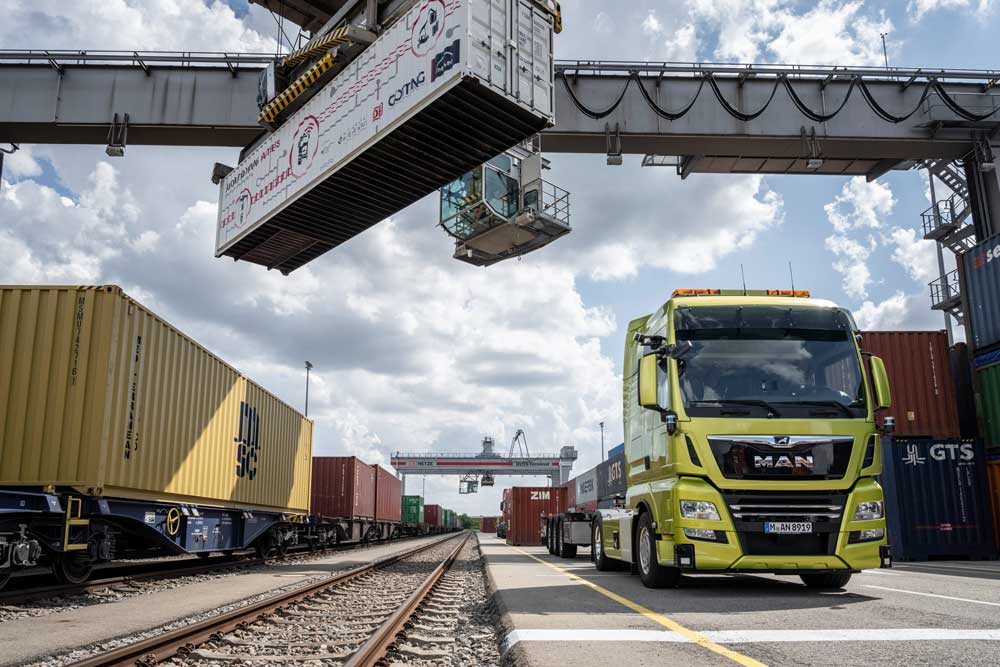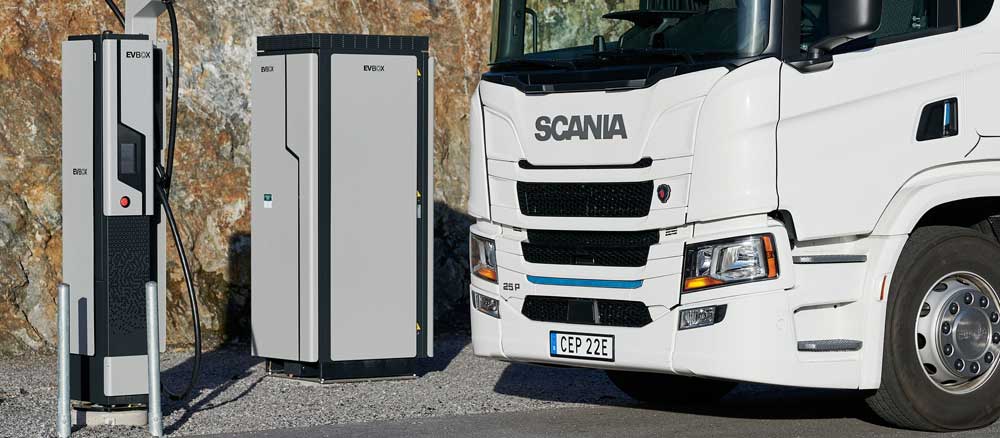In Ulm Dornstadt, Deutsche Bahn, MAN Truck & Bus, Fresenius University of Applied Sciences and Götting KG are shaping the digital world of tomorrow as part of the ANITA project: In the future, fully automated trucks are to run independently at the container depot of DB Intermodal Services and the DUSS terminal (Deutsche Umschlaggesellschaft Schiene-Straße mbH). This way, combined transport can be organised more efficiently and flexibly. This creates incentives for even more climate-friendly transport by rail.
In order for trucks and the terminal facility to “communicate”, the Fresenius University of Applied Sciences has now presented the results of its study. During the study, the scientists, in cooperation with MAN Truck & Bus, had analysed the behaviour of people and machines on site in order to convert them into digital processes and sets of rules. This is how a modular circuit diagram for autonomous transportation is to be created. “In order to use autonomous trucks in logistical processes, it is important to understand the typical operational requirements and to consider the necessary interfaces at an early stage. That is why we consistently focus on the specific practical relevance and logistical and scientific expertise in our autonomous driving projects. As such, the fundamental work of the Fresenius University of Applied Sciences is very important to us,” says Andreas Zimmermann, Head of Advanced Development of Electronics at MAN Truck & Bus.

Logistical processes are being innovatively reconfigured as part of the ANITA project (Autonomous Innovation in Terminal Operations). “Both digitisation and automation are decisive factors in the further development of terminal operations. They make it possible to carry out transportation faster, more efficiently and more predictably and to increase the capacity of existing infrastructure,” explains Andreas Schulz, Managing Director of DUSS. “Digital system control allows the driverless truck to be integrated smoothly into the terminal’s logistical processes,” says Prof Dr Christian T. Haas, Head of the Institute for Complex Systems Research at Fresenius University of Applied Sciences, making it clear that the background to this project is essential for all further steps.
Haas and his team also analysed and compared the logistical processes at other DB AG container terminals in Germany before the project commenced. After all, the digital platform is to be set up in such a way that it can be used as a basis for other sites where autonomous trucks are used for transportation – such as in container terminals, at ports or on industrial sites. These functions are to be safeguarded using a modular structure. “Our goal here is to start using autonomous trucks and minimise any necessary adjustments to the infrastructure, as these are usually costly and take a lot of time,” adds Haas. “This makes it as easy and cost-effective as possible to put the technology to use in the real world.”

The fact that the structures in such projects are highly diverse based on the site is a real challenge. These are open and complex systems involving a great number of individuals – from the forwarder to the crane operator to the materials requirement planner. What’s more, spontaneous human decisions occur right alongside automated processes. A significant challenge, as Haas explains: “Unlike humans, an automated system cannot improvise or bend the rules; there must be a clear instruction for action for every situation.”
The process analysis stage has now been completed in Ulm and across the country, meaning that the transfer to mission planning software can now take place. The contract specification language of the company Deon Digital will be used in a development process like this for the first time, and will ensure the greatest possible degree of reliability when information is exchanged between the instances. The results of the analysis are then incorporated into the development process for the autonomous truck. MAN is responsible for this stage in cooperation with Götting. Once the development and implementation phase is complete, the mission planning software and the truck will be tested in real-life operations in Ulm, with a safety driver on board at all times.

The trips between the DUSS terminal and the DB Intermodal Services container depot also serve to establish the technical prerequisites for autonomously operated hub-to-hub transportation. “Fixed routes between logistics hubs are ideal for autonomous trucks operation and are therefore a focal point for MAN in its efforts to develop autonomous driving systems,” says Andreas Zimmermann, explaining an additional aspect of the ANITA project. In addition, DB AG is analysing the transferability of the findings to other terminals in order to develop a roadmap to the Terminal 4.0 of tomorrow. The legal framework for such operations was only recently adopted by the upper and lower houses of the German parliament in the form of the Autonomous Driving Act, which in principle allows the use of such autonomous vehicle systems in Germany in defined operational areas, such as on routes between logistics hubs, and with technical supervision.











